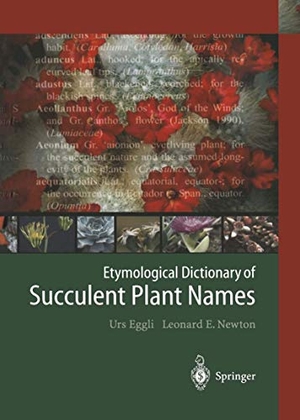Für statistische Zwecke und um bestmögliche Funktionalität zu bieten, speichert diese Website Cookies auf Ihrem Gerät. Das Speichern von Cookies kann in den Browser-Einstellungen deaktiviert werden. Wenn Sie die Website weiter nutzen, stimmen Sie der Verwendung von Cookies zu.
Cookie akzeptieren
Leonard E. Newton / Urs Eggli
Etymological Dictionary of Succulent Plant Names
- Springer Berlin Heidelberg
- 2010
- Taschenbuch
- 288 Seiten
- ISBN 9783642055973
Names are important elements to handle the diversity of items in daily life - persons, objects, animals, plants, etc. Without such names, it would be difficult to attach information to such items and to communicate information about them, and names are usually used without giving them much thought. This is not different for plants. When dealing with plants, however, it soon becomes apparent that the situation is somewhat more complex. Botanists use Latin names to bring order into the vast diversity, while everyday usage resorts to vemacular or "popular" names. As practical as these vernacular names are (it is not suggested that you should ask your
Mehr
Weniger
zzgl. Versand
in Kürze